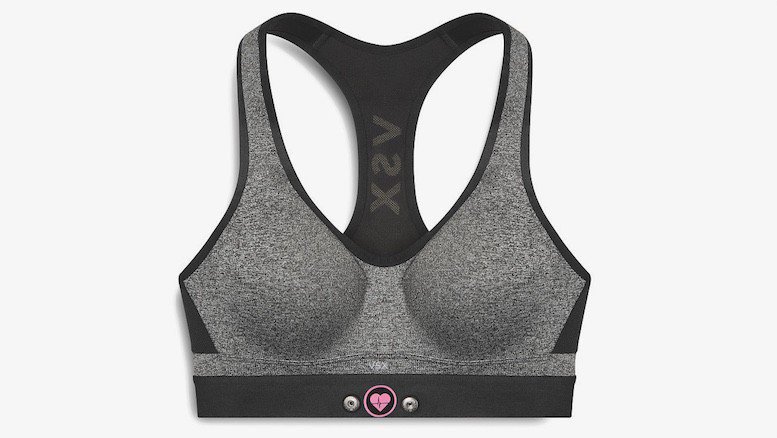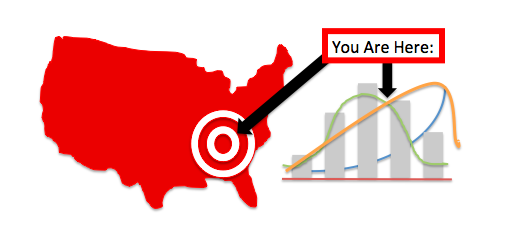Big Data Takes on Big (Boob) Problems
Big Data application comes in many shapes and sizes and the Big Data Bra is Big Data wrapped in the silk and latex of lingerie.
It starts with a simple problem.
We have come a long way baby from corsets and elastic superstructures. The width and breadth of materials and configurations is overwhelming today and surpassed only by the running shoe industry in the utilitarian fashion spectrum.
Yet bras still don’t fit well. For those who “need” to wear them, they pinch and sag and ride up your back. You push and pull to pack ‘em in and in return they pooch and groan to comply. The straps spend a lifetime slowly paving a permanent groove over the shoulder. At the end of the day, within the privacy of the house, you pop the straining band – freedom!
Open the bra drawer on the dresser and the volume and variety (2 Vs) are apparent. There’s a bra for every occasion: bras for sweaters or for t-shirts or racer back or the all-day-at-work ones. The padded, the push-ups and the breast minimizers. Going to the gym or hitting the trail is a whole different world altogether, with sports bras equipped in extraordinary configurations to look good somehow while keeping everything from exploding.
Then there’s a whole undergarment wardrobe established just for after dark: the trying-to-be-sexy bra, the one bra that goes with THAT dress bra (the dress is sssoooo cute but only one bra works with it), and the worst ever compromise – the strapless bra. These all fall in the genre of i-can-last-x-hours at the restaurant/dinner party/gala event. There are pads and patches to replace bras and yes, in a pinch, the old school – duct tape.
One Size Does Not Fit All
And neither does band width and cup. Travel to any department store lingerie section and you’ll find a world of bra selection. Unless you don’t really need one, it’s not about size and color. You want what looks and feels great. Although you want something pretty, it’s about fit and form. This is a perfect example of lots of selection but not true fit.
So you spend as long as you can stand in the lingerie section. Like the 20 year old dating strategy, you try on bra after bra to find the perfect match, or at least one that will work for a while. It’s a simple affair then but as time drags on (downward I mean), it gets harder to meet one you like. You know it may fit in the store and “hold much promise” but one wash later and it is on the path unfortunately to break down. Keeping it clean means delicate washes and special care but it’s going to unravel on you sooner than you like.
So how about flipping the market from push to pull? A single customer doesn’t need all that selection. She needs The One(s) that fit her. Wouldn’t the manufacturer and retailer want to sell her The One(s) without holding the inventory of racks of choices and piles of discards? Instead of creating a huge variety of bras that consumers can squeeze into, how about starting with the customer and tailoring the selection to her exact dimensions?
“3D printing is creating everything from cars to human tissue. Facial recognition software commonly creates 3d renderings from its algorithms.Facial recognition technology captures data form the contours of a person’s face and then computes the ratios between each feature. Since no face is exactly the same, each person would generate a unique data set based on the shape, size, and location of their features. This mathematical output can be compared and sorted for matching and identification purposes or to track a person’s identity.”
In a world of 3D printing and people recognition software, you should be able to take some pics and make a bra – 10 bras – that specifically fit the pic.
That’s where Big Data comes in.
My Big Data Bra begins with uploading personal pictures to the Volume, Variety and Velocity of data from Victoria’s Secret or Bali or Warner or Free People or Maidenform or Wacoal. They design and manufacture a bra – a suite of bras if they’re good – and send them to me, not the store. They send me sales suggestions on replacements. I send them back my battle worn discards, which they computer analyze for fatigue to find the next best thing – for me – using the millions of data points around me. I can send new pictures to show adapting to life’s gravity effect or cosmetic repair thereof and they use the feedback for new bras. The cycle continues.
Nice Tata Thought, but How Does This Solve Big Problems with Big Data?
This consumerism creates a huge non-medical database of biometrics. These geo-tagged, anomyzed sources are deposited in data lakes with other data associations. It creates a new lens for researching breast cancer. Several breast cancer studies have already linked larger breasts to increased risk of cancer but the correlations are only suggestions.
More data would create more patterns and new opportunities. In one capability, the information is utilized by huge research organizations, using larger resources in order to view the Big(ger) picture.
Another angle is third party specialists create ways to analyze a personal signature against other Big Data sources – location, transactional, lifestyle, etc. – to assimilate breast cancer risk factors unique to that person. Third party providers could also suggest products and services to enhance breast life choices. There could be an app for using the pictures to tap into other big data resources for your overall health.
Further outside the box
Now blow this concept out of the bra. Whole body scans could do the same for total body health by incorporating pictures into your Big Data Medical Record. Providers use them as part of a holistic view of your health. Apps analysis helps assess your strengths and weaknesses. Big Data derives suggestions for effective and very personal results.
We live in a global collective. Now is only the beginning of its documentation. Big Data is the ability to utilize those billions of millions of data points. Let’s use Big Data to solve Big Problems.

